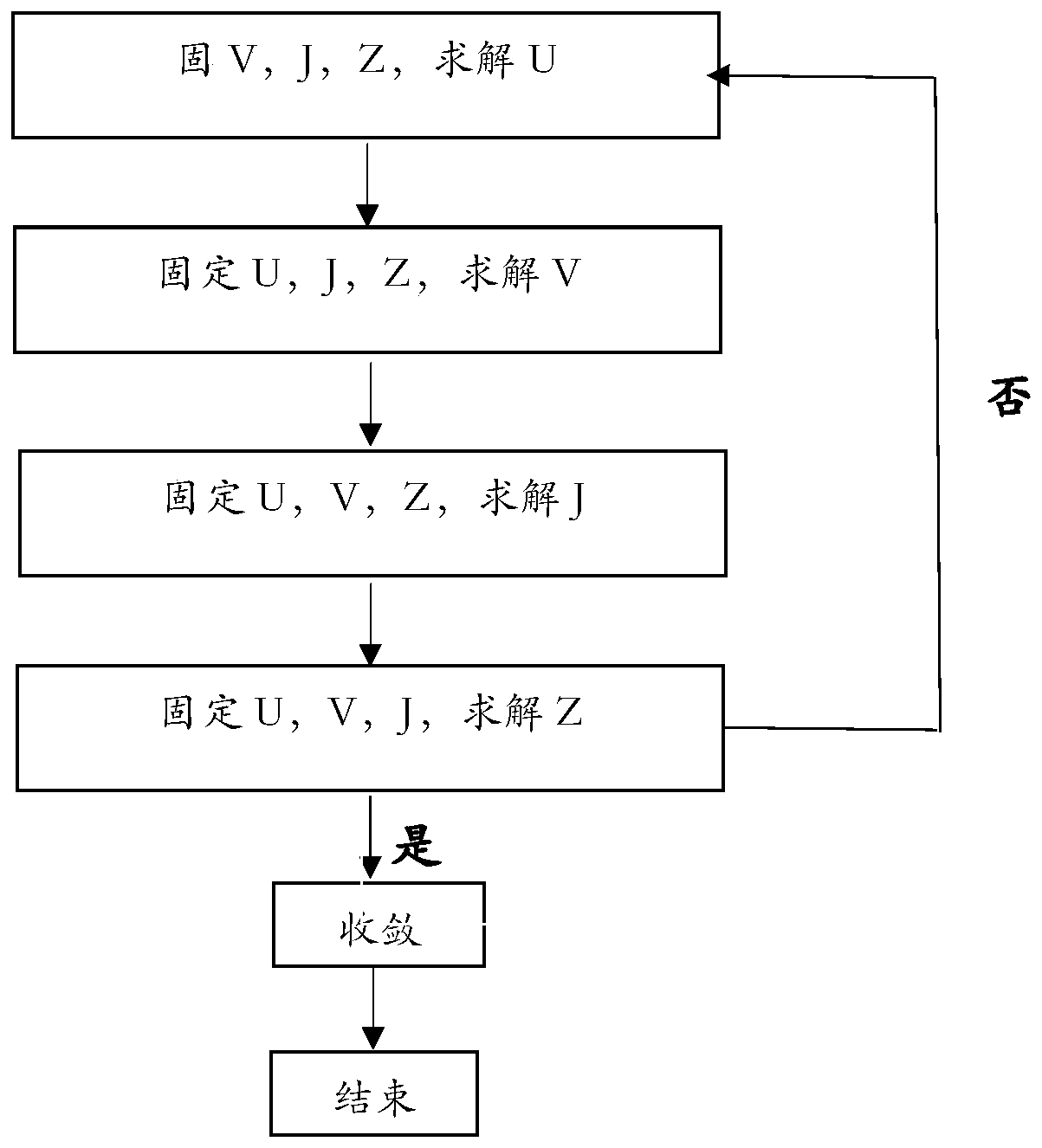Image clustering method based on self-representation and graph constraint non-negative matrix factorization
A non-negative matrix decomposition, image clustering technology, applied in character and pattern recognition, complex mathematical operations, instruments, etc., can solve problems such as the impact of accuracy
- Summary
- Abstract
- Description
- Claims
- Application Information
AI Technical Summary
Problems solved by technology
Method used
Image
Examples
Embodiment Construction
[0065] Below in conjunction with accompanying drawing and experiment the technical method of this invention is further described.
[0066] Based on the present invention, an image clustering method based on non-negative matrix factorization of self-representation and graph constraints is proposed, referring to figure 1 , the specific implementation includes:
[0067] A. Use the graph normalized NMF algorithm (GNMF) and low-rank embedding (LRE) to input the original image data set X=[x 1 , x 2 ,...,x N ] to build an analytical model, where each x i Is an image matrix, pulled into a column vector here, the size is
[0068] B. Solve the model by using the alternate iteration method, perform non-negative matrix decomposition on the input non-negative data, and obtain the low-dimensional representation matrix of the image.
[0069] C. According to the obtained low-dimensional representation matrix V, cluster the original image.
[0070] Further, the step A is specifically: ...
PUM
 Login to View More
Login to View More Abstract
Description
Claims
Application Information
 Login to View More
Login to View More - R&D
- Intellectual Property
- Life Sciences
- Materials
- Tech Scout
- Unparalleled Data Quality
- Higher Quality Content
- 60% Fewer Hallucinations
Browse by: Latest US Patents, China's latest patents, Technical Efficacy Thesaurus, Application Domain, Technology Topic, Popular Technical Reports.
© 2025 PatSnap. All rights reserved.Legal|Privacy policy|Modern Slavery Act Transparency Statement|Sitemap|About US| Contact US: help@patsnap.com



